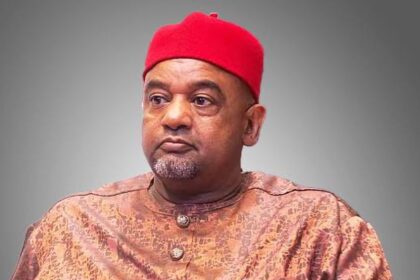Want to know about the poorest countries in the world? This article lists the bottom ten economies by GDP per capita ranking 2023
Despite abundant global wealth, some countries continue to suffer in extreme poverty. Going by GDP per capita country-wise, this article lists the poorest countries in the world in 2023. Before getting into the list of the poorest countries in the world, let’s first understand the concept of GDP per capita and how a country is ranked on this basis.
Methodology for ranking poorest countries in the world
GDP stands for Gross Domestic Product, which measures a country’s goods and services produced yearly. Its population must also be considered to get a clearer picture of how rich or poor a country is. Therefore, divide the GDP by the total number of people in the country to get GDP per capita.
Now, here’s where it gets interesting. Sometimes, the GDP per capita only tells us part of the story. That’s because the cost of living and inflation rates can vary a lot from one country to another. That is where PPP penetrates to make a fair comparison. PPP stands for Purchasing Power Parity and considers the local costs and inflation rates to give a more accurate picture of the standard of living in different countries.
Some countries might have artificially inflated GDPs due to being tax havens. So, in GDP per capita ranking 2023, GDP per capita PPP is a helpful tool to pinpoint the poorest countries in the world.
Poorest countries in the world by GDP per capita PPP
These are the poorest countries in the world in 2023 by GDP per capita PPP as estimated by International Monetary Fund (IMF) as of August 28, 2023
RankCountryGDP-PPP ($)1South Sudan515.752 Burundi8913 Central African Republic1,1304 Somalia 1,3705 Democratic Republic of the Congo1,4746 Mozambique 1,5567 Niger 1,6008 Malawi 1,6829 Chad1,79710 Liberia1,798
Smaller and less powerful countries in challenging regions are among the bottom ten economies. Liberia and Chad encounter obstacles like limited resources, weak financial sectors, and unfavourable tax regimes, hindering foreign investments and growth. Even larger nations like the Democratic Republic of the Congo and Mozambique struggle with poverty due to internal conflicts, political instability, and inadequate infrastructure, hampering their economic progress.
Let’s take a closer look at these poorest countries in the world and examine the underlying causes contributing to their economic challenges.
Poorest countries in the world: A closer look
As we now know the per capita income of these companies, let’s explore the reasons that have led to these bottom ten economies being categorised as the world’s poorest.
South Sudan
GDP: $3.9 billion
Population: 11,104,916
South Sudan, the world’s youngest country, gained independence in 2011 but faces significant economic challenges. Political instability, ongoing conflicts, and limited infrastructure hinder its progress. With a majority relying on traditional agriculture, violence and extreme climate events often disrupt farming, perpetuating poverty in this landlocked nation of about 11 million people.
Burundi
GDP: $3.4 billion
Population: 13,269,272
Burundi, a small landlocked country in East Africa, confronts significant socio-economic challenges, including political instability, conflicts, and inadequate infrastructure development. The nation’s economic struggles and the hardships faced by its citizens are further exacerbated by rapid population growth. With approximately 80 percent of the population reliant on subsistence agriculture, food insecurity is remarkably high compared to other sub-Saharan African countries.
Central African Republic (CAR)
GDP: $2.2 billion
Population: 5,757,091
The Central African Republic (CAR), situated in Central Africa, grapples with profound economic challenges due to political instability, armed conflicts, and inadequate infrastructure. The country’s wealth in gold, oil, uranium, and diamonds contrasts starkly with the widespread poverty experienced by its citizens. The combination of price increases for essential goods following the war in Ukraine and severe flooding and drought cycles has further exacerbated the CAR’s economic struggles.
Somalia
GDP: $7.5 billion
Population: 18,192,151
Situated in the Horn of Africa, Somalia has been plagued by years of political instability, armed conflicts, and humanitarian crises. The absence of a functioning central government, limited infrastructure, and widespread poverty have hindered the country’s progress.
Democratic Republic of the Congo (DRC)
GDP: $42.6 billion
Population: 102,553,019
The Democratic Republic of Congo, or the DRC, the biggest country in Sub-Saharan Africa, faces profound economic challenges despite its wealth in natural resources like cobalt and copper. Most of the population lives in poverty, with around 62 percent of Congolese living on less than $2.15 a day. Malnutrition, limited access to education and healthcare, and high fertility rates further exacerbate the country’s poverty and development constraints.
Mozambique
GDP: $3.3 billion
Population: 33,980,890
Mozambique, a sparsely populated country and a resource-rich former Portuguese colony, faces poverty due to natural disasters, disease, rapid population growth, low agricultural productivity, and wealth inequality. Despite its resource richness and strong GDP growth, the country remains among the world’s poorest, exacerbated by attacks from Islamic insurgent groups in the gas-rich north.
Niger
GDP: $9.2 billion
Population: 27,291,636
Niger, a landlocked West African country, faces economic challenges and high poverty rates due to limited natural resources, frequent droughts, and a predominantly agricultural economy. With 80 percent of its territory blanketed by the Sahara Desert and a growing population reliant on small-scale agriculture, desertification poses a significant threat.
Malawi
GDP: $6.9 billion
Population: 21,039,999
Despite its beautiful landscapes, Malawi, located in southeastern Africa, grapples with significant economic challenges. The nation relies heavily on rain-fed agriculture, making it vulnerable to climate change and fluctuating commodity prices. Nonetheless, the government remains committed to promoting economic diversification, improving education and healthcare, and reducing poverty.
Chad
GDP: $10.9 billion
Population: 18,327,841
Chad, located in Africa, faces significant economic challenges and high poverty rates despite having substantial oil reserves. The nation heavily relies on rain-fed agriculture, which leaves it vulnerable to weather-related shocks and widespread food insecurity. Human rights abuses and crackdowns on political opposition and dissent have been reported, raising concerns about democratic principles.
Liberia
GDP: $10.9 billion
Population: 5,428,692
Liberia’s enduring poverty stems from violent conflicts, including civil wars and outbreaks like Ebola, leading to unstable infrastructure and limited services. Forced migration disrupts agriculture, contributing to food insecurity. International organisations like the World Food Programme strive to alleviate poverty and improve the country’s future through sustainable development efforts and investment in education and healthcare.




